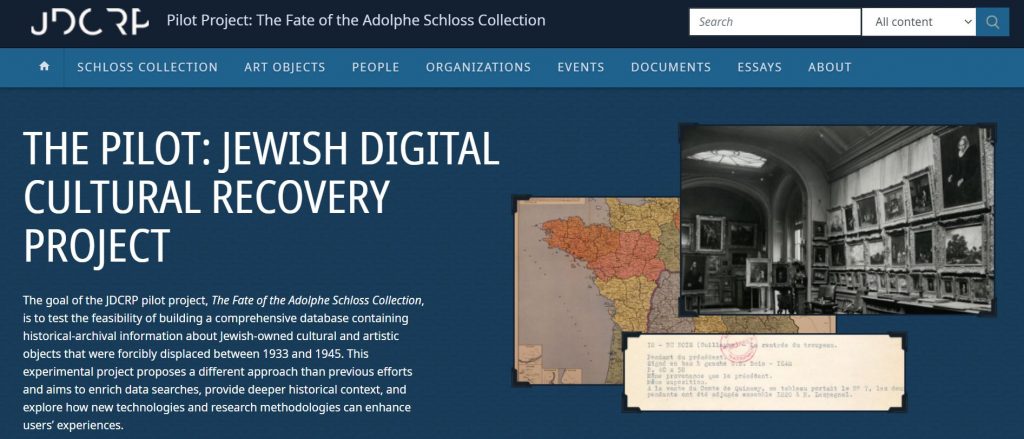
This searchable database of the looting of more than 41,000 individual art objects from Jews in German-occupied France and Belgium shows that at least half of the objects were not restituted to their original owners. The database contains the digitized versions of original Nazi looting records and photographs. The information in the database, based initially on art that the Nazis stored temporarily at the Jeu de Paume in Paris, is searchable by item, artist, owner and whether items have been returned.
It has been instrumental in the provenance search of the approximately 1,600 pieces of art discovered by German authorities in 2012 in the Munich apartment of Cornelius Gurlitt and subsequently in Mr. Gurlitt’s second residence in Austria. Jewish dealer Paul Rosenberg – the owner of at least one painting found in the Gurlitt collection — possessed a large collection of items that the Nazis amassed at the Jeu de Paume. Nazi leader Hermann Goering personally appointed a number of dealers to sell off Rosenberg’s collection, including Hildebrandt Gurlitt, whose son Cornelius was hiding the artworks. Each of the original ERR registration cards for more than 40,000 art objects has been digitized into the database in electronic form, listing Nazi ERR code numbers, artwork titles, artists and detailed descriptions of each work. Many entries include photos of the artworks or objects as well as a scan of the original Nazi record.“The Database of Art Objects at the Jeu de Paume” is consulted on a daily basis by major auction houses and many other organizations, and also by France’s Ministry of Culture. The database has helped art experts identify a number of major artworks for restitution. It has contributed to the creation under President Francois Hollande of France of a commission to identify the owners of artworks in the Musées Nationaux Récupération (MNR) collection and to restitute the artworks to them.
Together with the Commission for Art Recovery, and with support from the European Union, the Claims Conference launched the Jewish Digital Cultural Recovery Project (JDCRP). It’s goal is the creation of a comprehensive listing of all Jewish-owned cultural objects plundered by the Nazis and their allies from the time of their spoliation to the present. In July 2021 the JDCRP finished its Pilot Project: The Fate of the Adolphe Schloss Collection.

last updated February 2024

